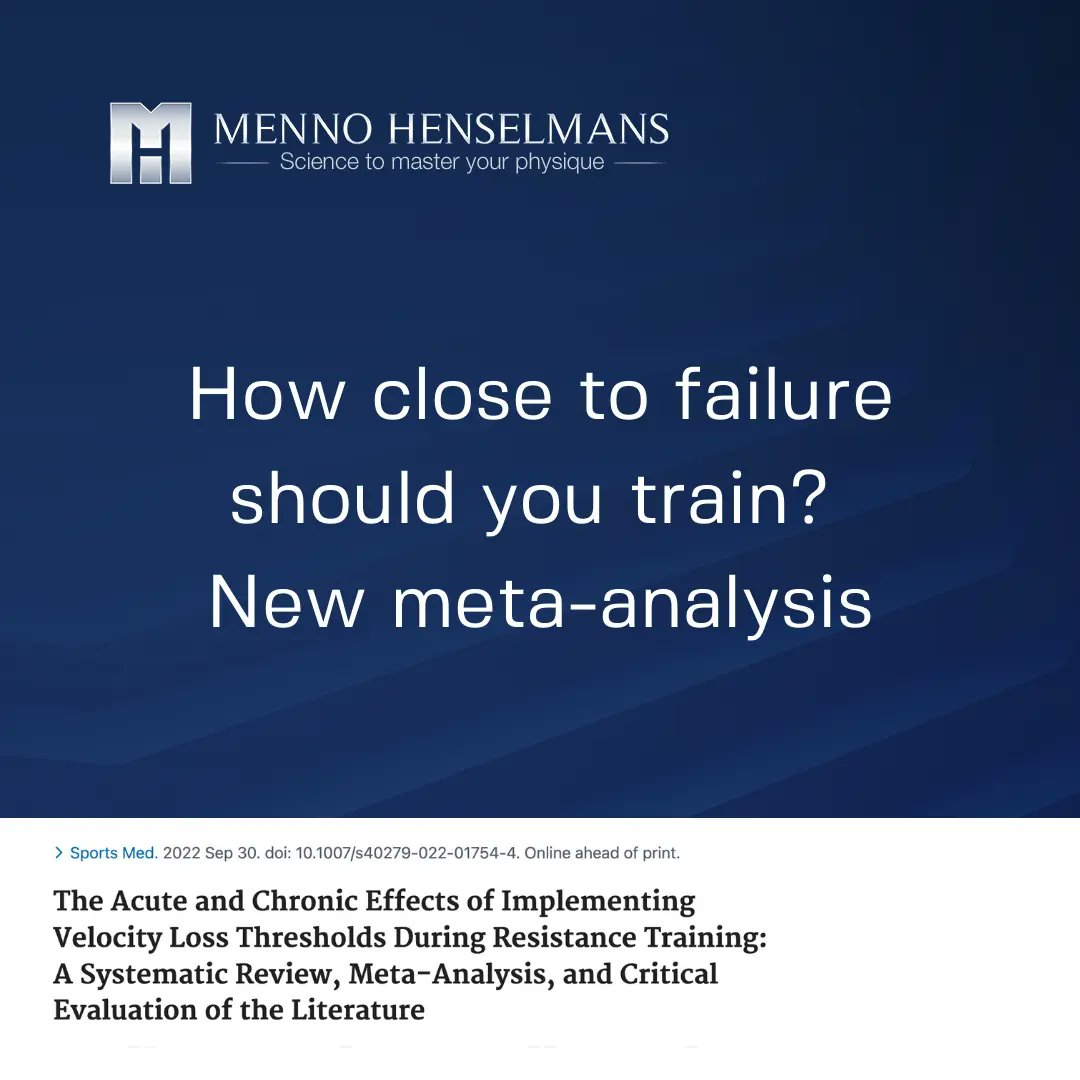
How close to failure should you train?
A new meta-analysis of the scientific literature sought to answer this question by looking at velocity stops.
A new meta-analysis of the scientific literature sought to answer this question by looking at velocity stops.

During a set, your velocity gradually decreases until it reaches 0 in the biomechanical sticking point when you reach momentary muscle failure. The level of velocity loss can thus serve as an objective measure of how close to failure you are.
However, one problem with the use of velocity-based training is that the relationship between proximity to failure and velocity loss is highly individual and context-dependent. It differs per exercise, training intensity and individual.
As a result, the average results can be pretty general and may not apply to individual contexts.
In fact, another new systematic review of the literature concluded that velocity-based training does not result in superior strength development compared to other ways to track proximity to failure, such as simply estimating reps to failure.
Considering it's very complicated and largely redundant, I generally do not recommend velocity-based training to my students or clients.
Back to the original meta-analysis on training to failure: Going closer to failure improved hypertrophy by virtue of a higher total volume load, but there was no significant improvement from reaching complete failure.
It's the extra reps you do and their tension on your muscles, not the fatigue you accumulate, that makes your muscles grow.
For strength and power development, going closer to failure did not significantly improve people's gains. There are in fact multiple studies finding detrimental effects on power and strength development of going too close to failure.
Going to failure prolongs recovery, knocks out high-threshold motor units, interferes with perfect technique and decreases movement velocities. The optimal stimulus-to-fatigue ratio for strength development thus seems to be a few reps away from failure.
These results are in line with my team's own in-house meta-analysis on the literature of training to failure that we did for our PT Course. Going closer to failure is much more beneficial for size than for strength, but for neither do you need to train to complete failure.
One important variable in all discussions of training to failure is total training tonnage (sets x reps x weight). In some settings, going closer to failure increases this: if you do 1 set, for example, it's obvious that the closer to failure you go, the more reps you can do.
If you do multiple sets, however, you get a trade-off in the form of more reps in the early set(s) but fewer reps in later sets due to the accumulated fatigue.
Therefore, when I recommend training to failure for my students and clients, I typically only recommend it for the last set of the exercise.
I hope this knowledge helps you optimize your training program based on your specific goals.
#mennohenselmans #onlinepersonalcoach
I hope this knowledge helps you optimize your training program based on your specific goals.
#mennohenselmans #onlinepersonalcoach
• • •
Missing some Tweet in this thread? You can try to
force a refresh










